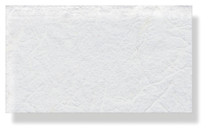
Natural Pigments
Rublev Oil Medium Canada Balsam - 100ml
SKU:
684191442919
$91.95
Canada Balsam is the pale yellow oleoresin with a faint greenish cast of the balsam fir tree. It is dries to a clear transparent film. It is used as a plasticizing resin for varnishes and paints. Cana…
6 customers are viewing this product
Description
Canada Balsam is the pale yellow oleoresin with a faint greenish cast of the balsam fir tree. It is dries to a clear transparent film. It is used as a plasticizing resin for varnishes and paints. Canada balsam is amorphous when dried. Since it does not crystallize with age, its optical properties do not deteriorate.OriginThe name "balsam fir gum" is mainly used in North America. In Europe, the product is called "Canada Balsam." It is also variously identified as turpentine, fir resin and fir gum. Of all the species of fir in North America, the balsam fir (Abies balsamea) growing in Qubec and New Brunswick, Canada, is the source of balsam fir gum or Canada balsam. It is a syrupy, greenish-yellow liquid that is drawn from small blisters on the trunk of the fir tree. Balsam fir gum is harvested between April and November, however, it is typical to harvest in warm weather, as the gum is more fluid during warmer temperatures.The most common adulterant of Canada balsam is either colophony (rosin) or crude turpentine. The best method of detecting colophony is to drive off the essential oil by prolonged heating on a water bath, leaving the dry resin to be examined. In the case of pure Canada balsam, this dry resin will be found to have an acid value of about 120 to 125, whilst colophony has an acid value of about 165, so that an acid value of over 130 is a very strong indication of the presence added colophony or crude turpentine. The presence of these adulterants can, according to E. Dietrich, be confirmed by the Storch-Morawski reaction, but, in the author?s opinion, this is not correct and cannot be relied on.There is a product sometimes to be found on the market under the name of Oregon balsamî, which is not a natural product at all, but is a mixture of rosin and turpentine, closely resembling Canada balsam in appearance, and which is used to adulterate it frequently. There is also a true Oregon balsam, which is the oleoresinous exudation from the trunk of Pseudotsuga mucronata. This balsam yields a considerable quantity of an essential oil, which can be characterised by its consisting very largely of laevopinene. The factitious Oregon balsam of the above description contains the same proportion of solid resin as does pure Canada balsam and the physical characters of the two substances are as nearly as possible the same. Detection of such adulteration is however possible, by separating the essential oil and the resin and examining each separately.Canada balsam closely resembles Strasbourg turpentine in physical properties and composition. Strasbourg turpentine is obtained from the Abies alba, silver fir or European silver fir, and named after the trading center in Vosges. The Italians called it Trementina di Strasburgo or di Alsazia. It is a less viscous balsam used historically as a varnish (dissolved in spirits of gum turpentine) to provide special protection to easily decomposed pigments such as verdigris. It was used also as an ingredient in oil varnishes, sometimes to dissolve more insoluble resins such as amber.StorageTo retain its essential properties, containers of balsam fir gum must be kept closed and stored in a cool, dark place. Canada blasam can easily be kept for several years in this manner.Cleaning>To remove fir gum from clothing, apply strong cleaners, such as Pinesol, Lestoil or WD-40 spray lubricant, then wash the article as usual.To clean fir gum from tools, containers and hands, apply a small amount of vegetable oil, margarine or butter to the article or hands. These will easily dissolve the fir gum. Then wash with warm water and soap.UsesCanada balsam is used as a plasticizer for varnish and paint and can be used as a varnish when diluted with a small quantity of denatured alcohol, lavender spike oil, or spirits of gum turpentine. The resin can be mixed with drying oils (such as linseed and walnut oil), and with other resins (such as copal and damar) dissolved in compatible solvents.Canada balsam is used to prepare microscope slides and high precision optical lens assemblies. Balsam fir gum is used for optical lenses because, when dissolved in an equal volume of xylene, its refractive index is almost exactly the same as that of glass.














